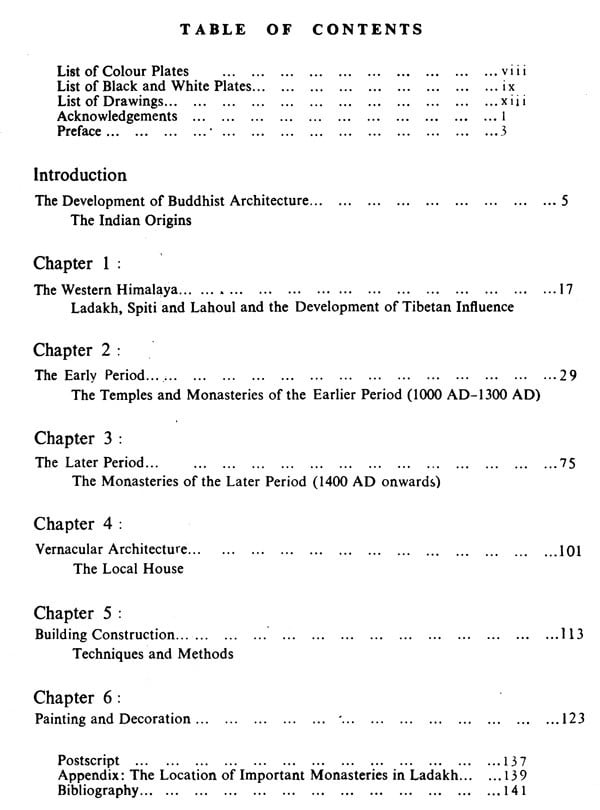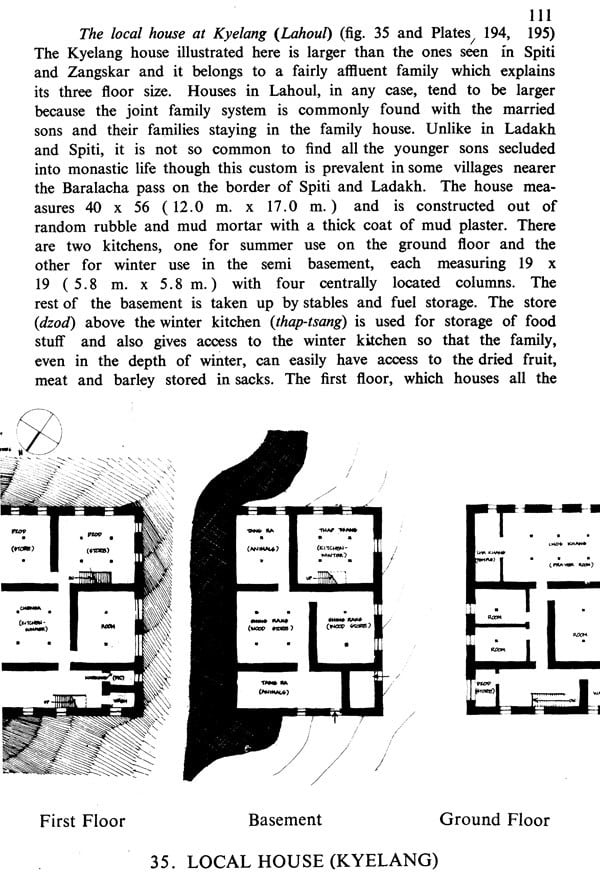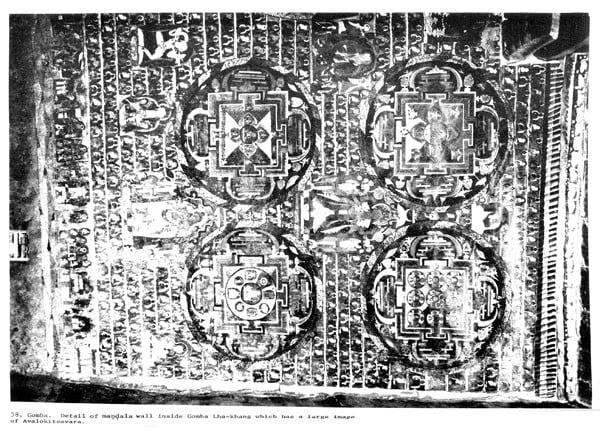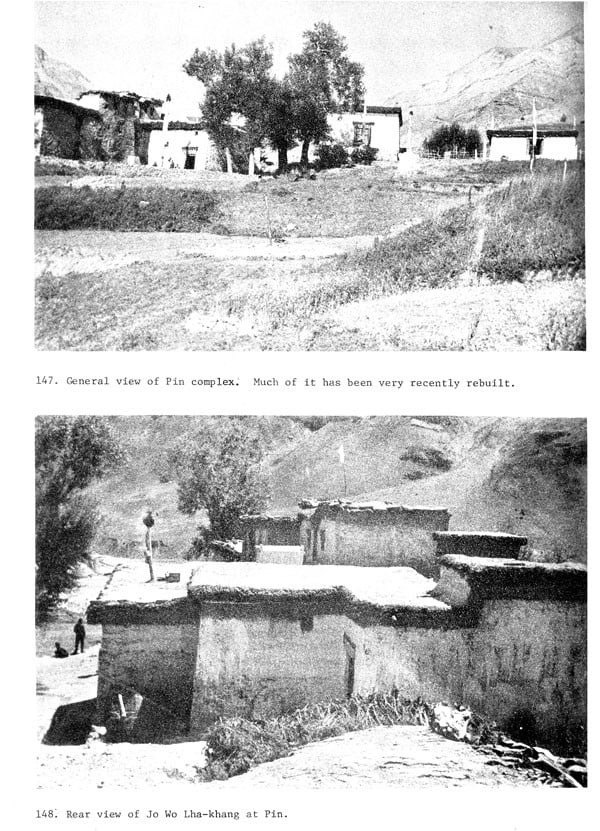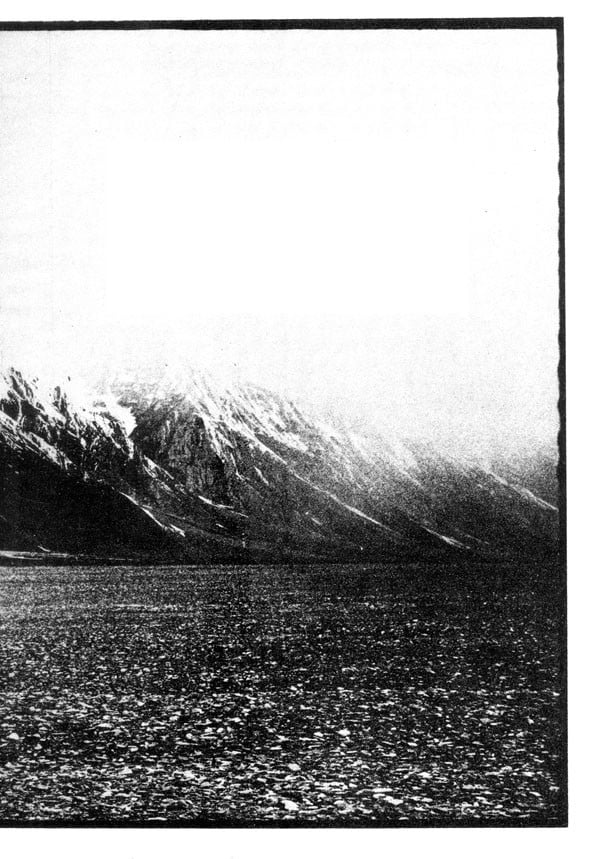
Buddhist Monasteries in the Western Himalaya (An Old and Rare Book)
Book Specification
| Item Code: | UAS081 |
| Author: | Romi Khosla |
| Publisher: | Ratna Pustak Bhandar, Nepal |
| Language: | English |
| Edition: | 1979 |
| Pages: | 260 (Throughout B/w Illustrations) |
| Cover: | HARDCOVER |
| Other Details | 10.00 X 7.00 inch |
| Weight | 900 gm |
Book Description
The scope of this work has been defined by those places that it was possi ble to visit on three separate expeditions into Lahoul, Spiti and Ladakh between the period 1968-1977 and it presents a selected collection of the photographs and measured data that was collected on those occasions. It is not the inten tion of this work to provide a deep study into Tibetan or Western Himalayan architecture which is an extremely complex subject that could be studied in numerable works. Rather, it is the intention to provide a panorama of material that has been collected over an extensive area during the last ten years. The purpose of measuring the various monasteries and presenting their plans here was to tabulate, at a given time, the mud structures of this region which are con stantly undergoing change. Further, it is hoped that this material could provide the ground work for more work that can be done on the subject. Much has been written on the religious and doctrinal aspects of Tibetan Buddhism and much has also been written about various travels in the Western Himalaya, but there is little material available on the physical documentation of the monasteries that have already been described by many visitors. It is the in tention of this work to broaden out the scope of the study of Tibetan culture beyond the confines of its religions and liturgical aspects; away from the study of religious objects and texts which have dominated most of the more recent published works. Much is known about the religious practices, the sacred symbols, the thang-kha paintings, the iconography and the doctrines of Tibetan Vajrayana Buddhism. Museums in Europe and America have some of the finest examples of Tibetan paintings and religious objects which had been 'acquired' by some of the earlier travellers into Tibet and they have provided the basis of some of the more authoritative recent publications. Yet the field work necessary to provide for the physical background to this culture has been sadly neglected and it is hoped that a small part of this enormous gap can be filled by the study that follows.
Beyond the subcontinent, the age of Buddhism brought with it fundan mental changes in the various social organisations that had hitherto existed in the Eastern and Northern countries. Buddhism was instrumental in trans forming the various autonomous tribal clans into centralised early feudal forms of society. This change and the role that the Buddhist kings played in overcoming the tribal chiefs can be seen in the history of Tibet. The expansion of the territorial boundaries of the kingdom of Lhasa concides with the rise and spread of Buddhism in the region. Later, when Buddhism flourished in the Western Tibet Kingdom of Gu-ge in the 10th and 11th centuries, the military expansion of the might of the Gu-ge empire from Tholing to the border of Kashmir in Ladakh was matched by the founding of forts and monasteries in these outlying areas. It cannot be assumed, that the times during which Buddhism was becoming a Pan-Asian religion (China, Korea, Japan, Vietnam, Sri Lanka, Burma, Thailand, the Islands of South East Asia between the 1st and 5th centuries AD, Nepal 5th century AD, Tibet and Mongolia 8th 9th century AD) peace reigned in the region and Buddhism spread peacefully through missionary activity. On the contrary, one sees the Buddhist missionaries coming into contact with tribal clans, all of whom relied upon some form of violence to maintain territorial control.
**Contents and Sample Pages**
